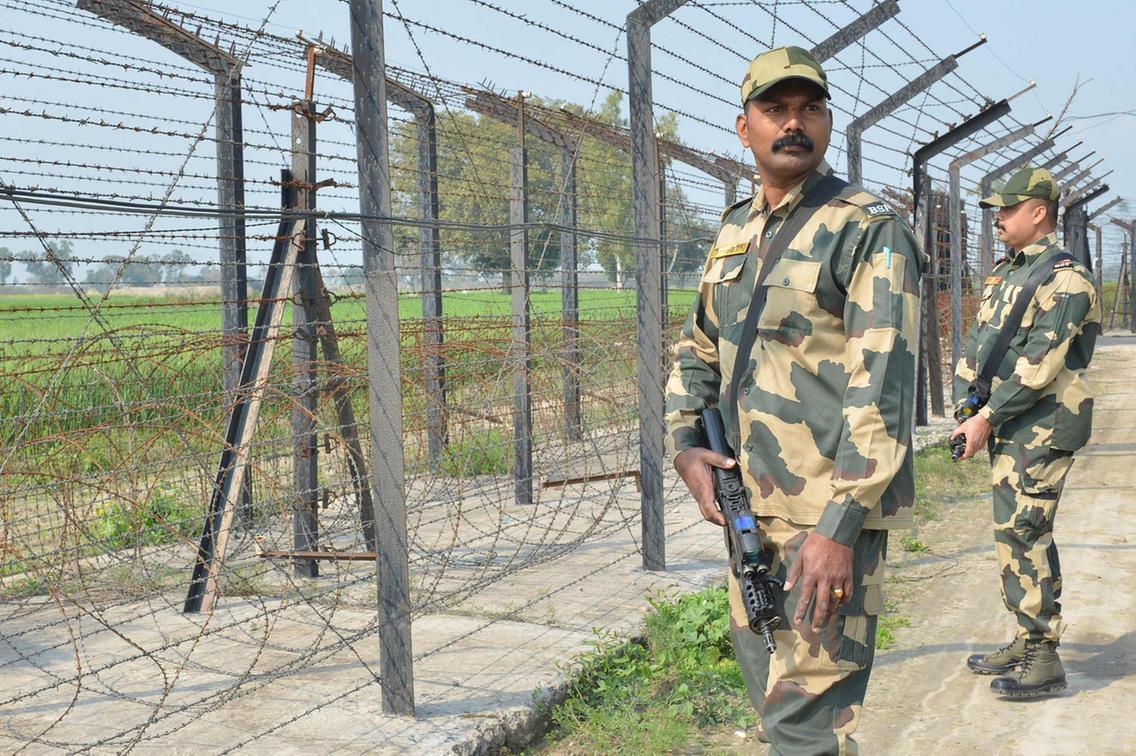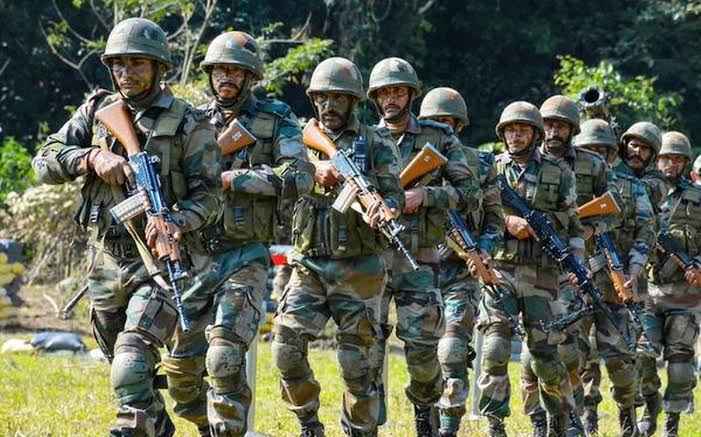
Having land border of 15,106 km with six nations of which 6,811 km is with China and Pakistan, Indian Army is on high alert round the clock and made the country go in for rapid modernisation since it is indeed a challenging task for the world’s second largest Army.
Having as its theme “Nation First” it aims to highlight that ‘Indian Army strengthens the idea of India and lives by the national values. We are dedicated to preserve national interests, safeguard sovereignty, territorial integrity and unity of our nation. We uphold the ideals of the Constitution of India, thwart proxy wars, defeat internal threats, assist our Government and the people of India and all our actions are dedicated to the nation.
The Indian army which ranks second in terms of number of troops after China with a manpower strength of 1,237,117 active troops supported by 960,000 reserve troops, the country is aspiring to portray itself as a potential superpower despite the numerous challenges that it faces on its two fronts which has often made our service chiefs raise the issue of two front wars.

As the subject comes up at almost every interaction between the media and the service chiefs, there is indeed an imperative need to look at the modernisation drive by the Government.
India began an intense phase of upgrading its armed forces in the late 1990s focusing on developing indigenous military equipment rather than relying on other countries for supplies. This effort has now been stepped up with the present Government focusing on Make in India and opening up the defence equipment manufacturing to the private sector and encouraging joint ventures by private sector with foreign armament makers.
The armed forces succeeded the military of British India following India’s Independence in 1947. Since then the Army has been continuously modernised though with some hiccups in the purchase of equipment which did lead to disruptions in the procurement of modern weapons. However, this has not deterred the overall modernisation of the Army and strengthening of the borders with the construction of all weather border roads and forward air bases especially near the Sino-Indian border.
This has enabled the country to successfully defend its hard won Independence after almost two centuries of colonial rule under the British.

Though the country has been striving to normalise relations with nieghbouring Pakistan and China but it has not relaxed the modernisation drive and this aspect has been broadly outlined in the Long Term Integrated Perspective Plan (LTIPP) which has been cleared by the Ministry of Defence (MoD) and covers up to 2027.
With terrorism continuing to be encouraged from across the western border with Pakistan and counter insurgency operations in several northeastern states and skirmishes with the Chinese on the northern borders, modernisation has indeed become imperative.
Modernisation is a continuous process for any Army. The Indian Army has an onerous task of countering the threat of two countries China and Pakistan as also catering for counter insurgency operations in Jammu and Kashmir as well as the northeast. Both these nations are modernising their armed forces at a rapid pace.
Even while the Government has been going in for import of defence equipment, but, the current BJP-led NDA Government of Prime Minister Narendra Modi has been laying emphasis on modernisation through indigenous development and pursuing the policy of Make in India.
Several areas have been identified which the Government plans to modernise so that the Army does not lag behind in technology as China has been focusing on this area specifically.

These are infantry, digitalisation, armour, artillery and air defence. Defence Research and Development Organisation (DRDO) has been playing a key role in these areas.
There is indeed immense optimism that the Army is focusing in the right direction to ensure that it can meet the challenges that it would be facing in the coming years and decades.
Howsoever modern an Army maybe, yet when it comes to the crunch it is the foot soldier or the infantry who would continue to play a key role and so the Infantry soldier has to be capable of fighting a battle with modern equipment.
F-INSAS is a programme to equip its infantry with state-of-the-art equipment, and stands for Future Infantry Soldier as a system. But, it has been dropped in favour of two separate projects. The new programme will have two components: one to arm the future infantry soldier with the best available assault rifle, carbines and personal equipment, such as helmets and bulletproof vests. The second component is the Battlefield Management Systems (BMS) which is modelled on the US military Future Warrior system.
This is an area that is invariably focused at almost every DefExpo that takes place in this country and several Indian companies have been expressing interest in this field and seeking foreign collaboration.

The BMS will include palm top communication system and helmet mounted camera. The project will impact each soldier but being lesser priority than the weapon system.
The current Government is keen on digitising military applications and there are four important aspects in this area. These are: Information Sharing; Improved Situation Awareness; Speed of Command and; Enhanced Mission Effectiveness. This is characterised by the aspects of Reconnaissance, Surveillance and Target Acquisitions.
In keeping with this drive to provide Indian soldiers with the best possible equipment, the armed forces have embarked on a shopping spree for modern assault rifles, body armour and helmets, providing a potential boost to global arms suppliers.
The Government is seeking to give the infantry the latest equipment and as part of this exercise it is scouting for a new model on the global market for 185,000 assault rifles. The MoD also needs to buy hundreds of thousands of helmets and tens of thousands of bullet proof vests.
The moves are part of Prime Minister Modi’s $250 billion push to modernise India’s armed forces as infantry continues to face the brunt of deadly attacks in disputed border areas such as Kashmir and the northeast.
Plans to buy new equipment from overseas, however, have been held back by bureaucratic delays and the military’s desire to balance the needs of troops against efforts to have equipment built domestically under Modi’s Make in India programme, a key plank in his drive to boost local manufacturing.
“It’s encouraging that they’re going ahead with this, but it’s discouraging that it’s not made under Make in India,” said Anit Mukherjee, a former Major in the Indian Army and Assistant Professor at Singapore’s S Rajaratnam School of International Studies. “The fact that it took 10 years for Indians to go ahead and say, ‘we’re importing’ means the bureaucracy is still holding back modernisation of the armed forces. That’s problematic,” he observed.









